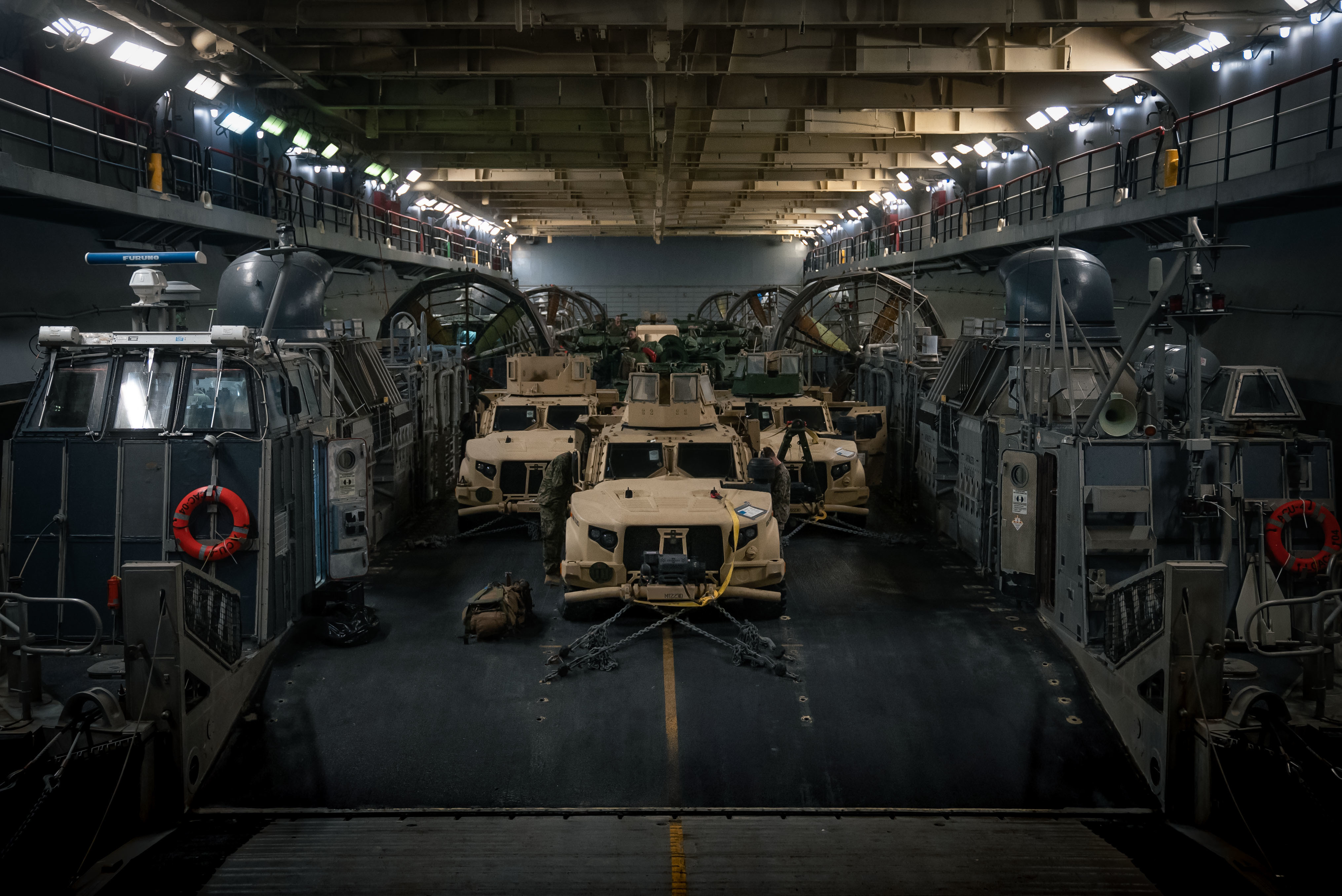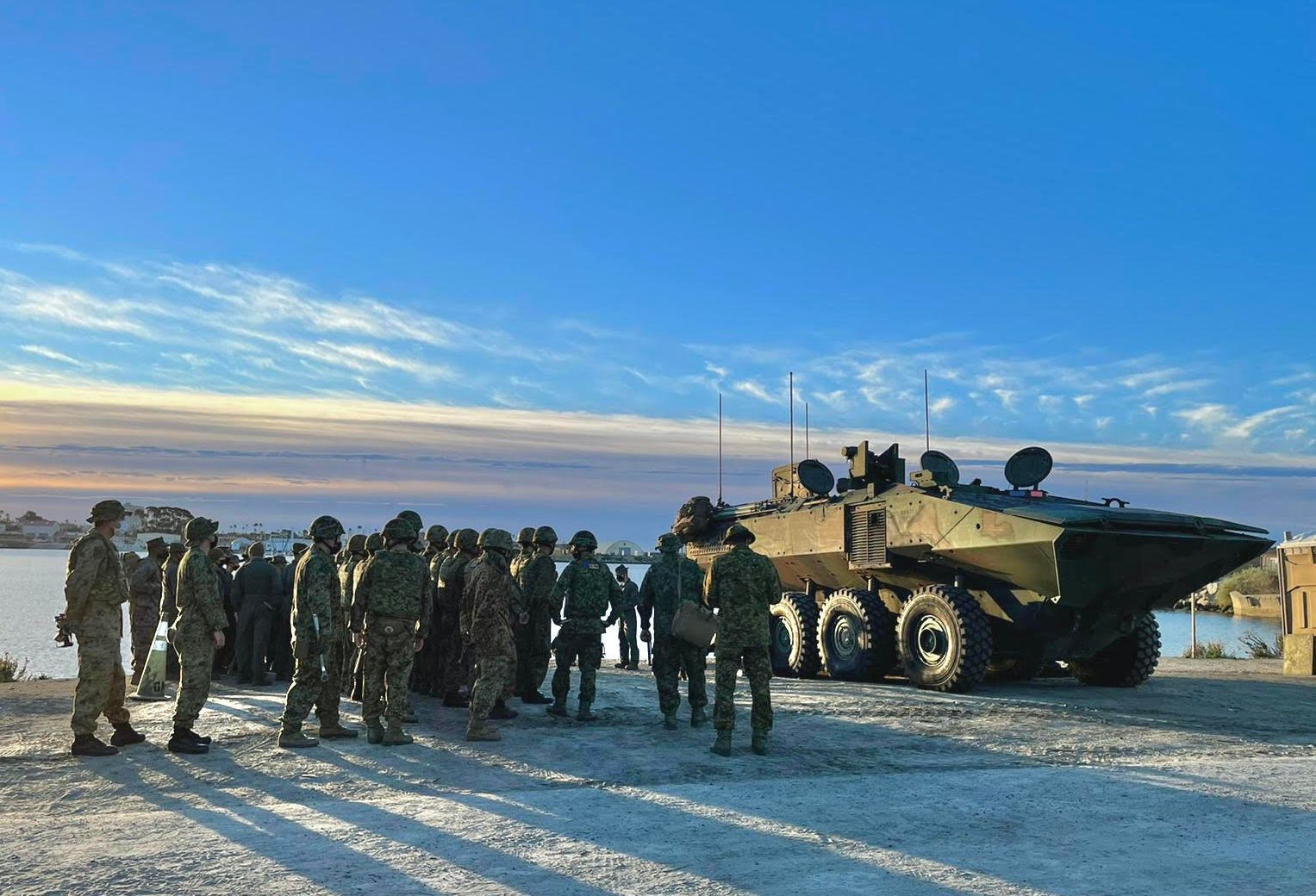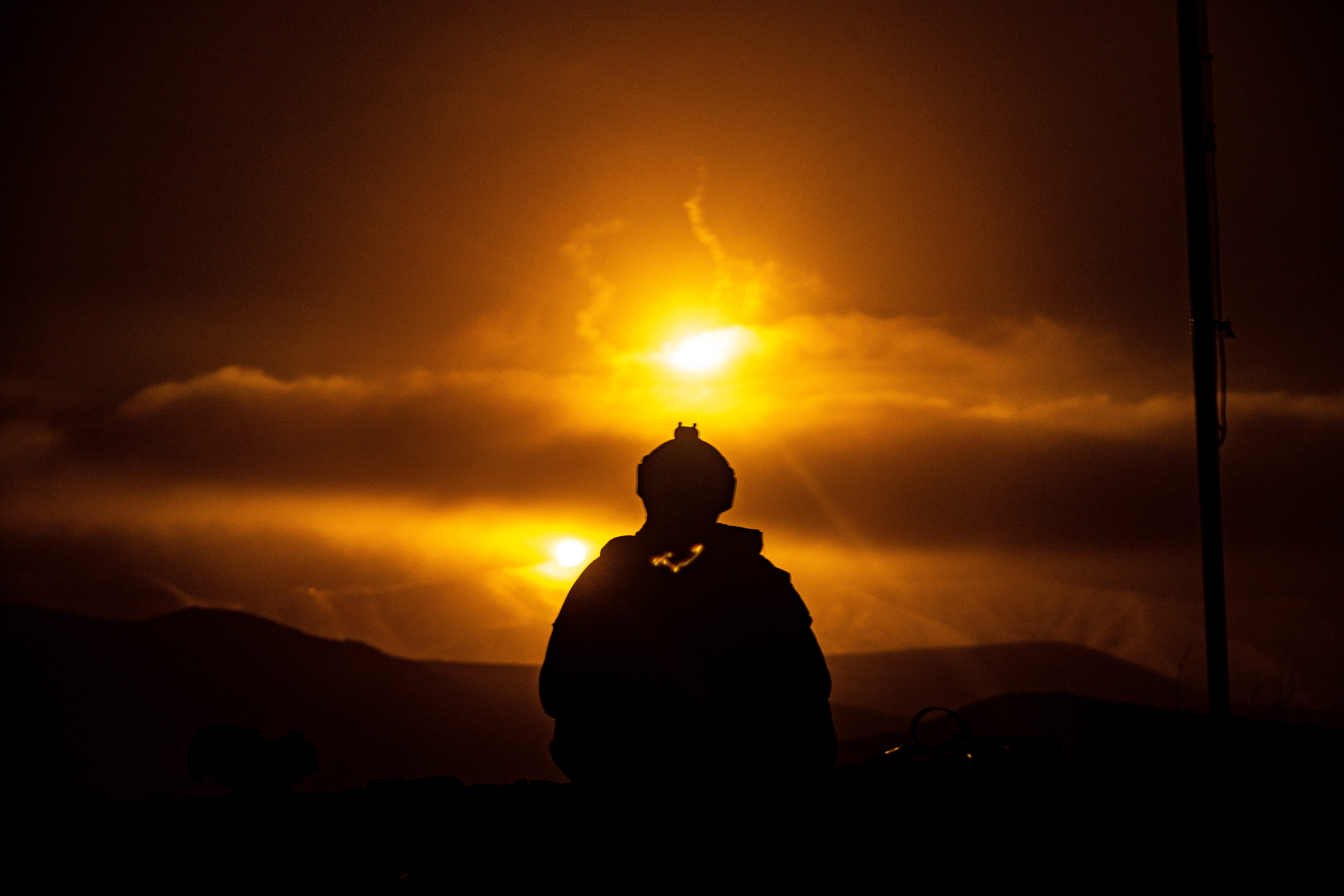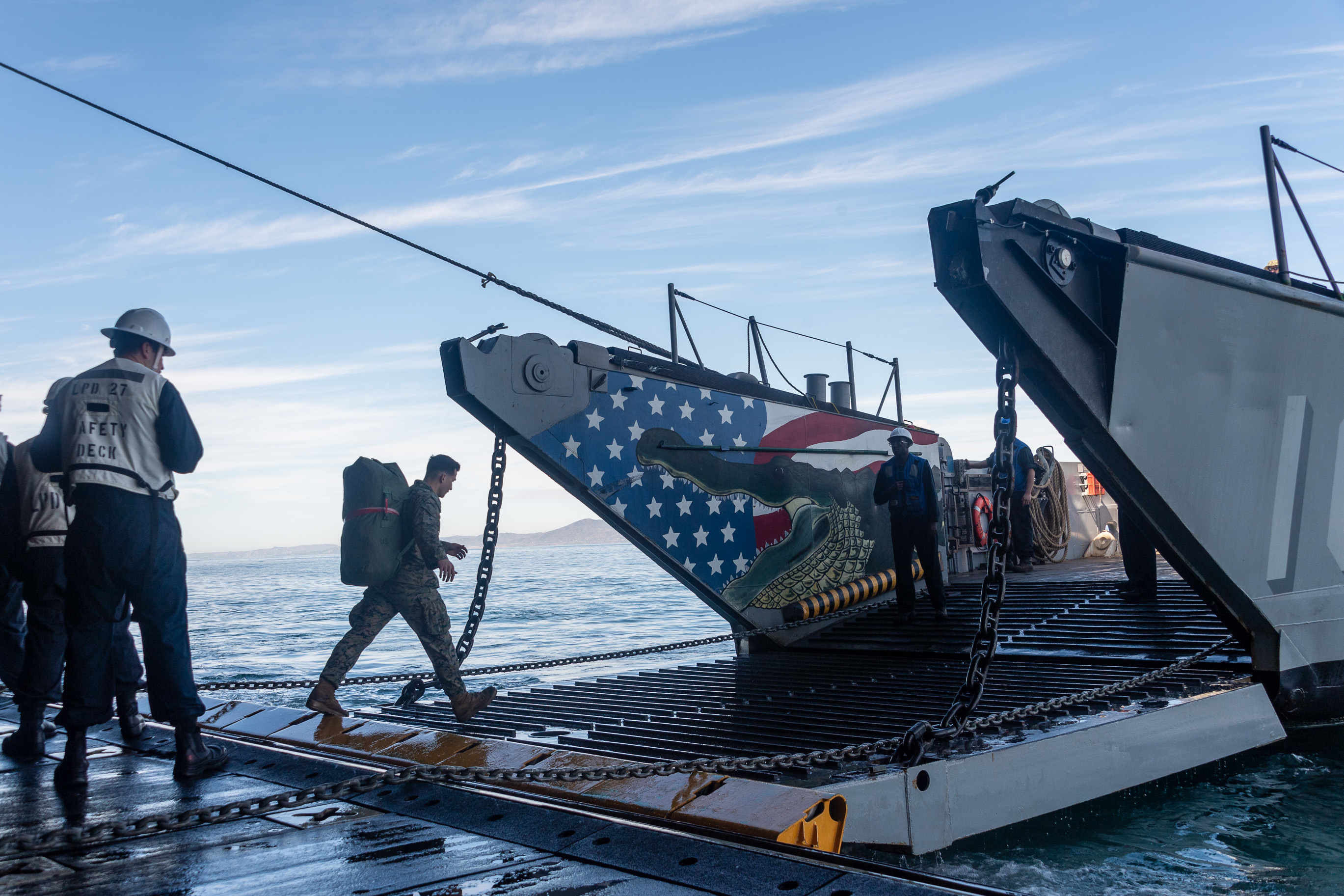
The Marine Corps’ top requirements officer on Wednesday defended the service’s modernization overhaul against recent criticisms that the Marines are on the wrong path.
Lt. Gen. Karsten Heckl, the deputy commandant for combat development and integration, acknowledged that the Marine Corps has not successfully communicated its Force Design 2030 efforts.
“I clearly as the requirements officer of the Marine Corps did a poor job explaining this,” Heckl said.
Heckl, who also leads Marine Corps Combat Development Command, argued the need to counter China is what led to the overhaul of the force, pointing to the 2018 National Defense Strategy, which identified China as the main challenge for the U.S.
“We always, always build to the worst-case scenario, which in this case clearly is China, not just militarily,” but also their ability to influence and project economic power,” Heckl said speaking at a U.S. Naval Institute-CSIS Maritime Security Dialogue Wednesday.
“This is much worse than the 70-year Cold War with the Soviet Union.”
The remarks come as Marine Corps Commandant Gen. David Berger’s modernization plan, an effort to reshape the service into a lighter, more mobile force for a potential future conflict against China, has received public criticism in recent months from retired officers.
Heckl noted the Marine Air-Ground Task Force (MAGTF) is still part of the Marine Corps and that the goal is to provide commanders more resources to operate in the threat environment.
“But the MAGTF still exists. As I said earlier, the stand-in force is the III Marine Expeditionary Force. They’re there, now. We are giving them tools – we’re going to give the commanding general of the III Marine Expeditionary Force more tools to deal with the pacing threat that would have application across theaters,” he said.
A key part of the Marine Corps’ vision for operating in the Indo-Pacific is setting up ad-hoc bases on islands and shorelines throughout the region where they could then fire weapons like anti-ship missiles as a way to create chaos during a conflict.
Heckl referenced a recent conversation he had with the chief of the Swedish Navy, who said there are thousands of islands and archipelagos off Norway, Sweden and Finland. “She wants us to come up and exercise,” Heckl said of Rear Adm. Ewa Skoog Haslum.
His remarks address one concern of retired officers, which is that the Marine Corps is too focused on the Indo-Pacific.

“We have three Marine Expeditionary Forces around the globe that we’re going to make more capable through the modernization efforts of Force Design. It’s just that simple,” Heckl added.
The Marine Corps general compared the current criticisms of Force Design to “false allegations” about the MV-22 Osprey during its early days when the Marines experienced several crashes.
As for tanks, which the Marine Corps has already divested from its inventory, Heckl argued a conflict that would require tanks would be a joint fight, meaning the Army would participate. He acknowledged tanks could play a role in a conflict in Taiwan, but likely not in other parts of the Indo-Pacific.
The Amphibious Combat Vehicle, Heckl said, “is very survivable, very mobile,” and the 30-mm cannon variant could, like tanks, blow holes through walls in an urban warfare environment.
“We’re also fielding … long-range precision fires, right, that we can use to strike and in an urban environment could change the calculus a little bit,” he said.

A key concern among retired officers critical of the modernization overhaul is combined arms, which Heckl argued has “changed fundamentally” due to technology.
“In this case, combined arms is much more than towed cannon artillery, tanks and aviation. I will tell you it starts in the information environment, which is often where we don’t do so well, and then cyber, space,” he said.
“As a MEF commander, people would be like, ‘well we’re going to be this number of days left of bang.’ Stop saying bang. What is that? Again, old think. ‘Well, it’s Marines. It’s when I shoot stuff and kill things.’ No. Information environment. Cyberspace. Bang is happening now. So that is illustrative … of how dramatically it has changed. Combined arms – and now, with again, one of the primary drivers of force design was the proliferation of long-range precision weapons that can hold us at arms length.”
Part of the Marine Corps’ modernization efforts includes experimentation with the infantry battalions. When the service embarked on its Force Design work, Heckl said the average size of an infantry battalion was 896 Marines and the lowest number of Marines the service has assessed is 735.
“We think it’s probably going to be in there somewhere. We don’t know. That’s why the fleet right now – all three MEFS are involved in infantry battalion experimentation, right, IBX,” he said. “Each one has a dedicated battalion – that started when I was at 1 MEF – that is focusing on a specific aspect of force design. And then that’s being fed back from the fleets into headquarters Marine Corps to make the appropriate, iterative adjustment.”
Over the court of the next year, the Marine Corps will do more experimentation with the infantry battalions on both the East and West coasts. The Marine Corps is taking the chance to perform Force Design experimentation during all of its exercises.

As for manpower, which Berger has cut in order to save money within the Marine Corps budget for the modernization initiatives, Heckl said the service is assessing the potential for a force of 175,000 Marines. The Marine Corps’ Fiscal Year 2023 budget request is seeking funds for 177,000 active-duty Marines. Heckl noted the service swelled to more than 202,000 Marines during the wars in Iraq and Afghanistan.
“Right now we don’t know the end state. Remember, 2030 is a waypoint, it’s not a destination. But we’re looking at probably about [175,000]-ish. We’ll see,” he said. “But the only lever the commandant had in the course of his move to, within our topline not ask for [more] sources, was manpower. And again, rightfully so, based on how much we had grown.”
Size is another concern among those critical of Berger’s strategy.
“I think they have several concerns. One is that the Marine Corps’s getting smaller and will be challenged to meet its global commitments. One is that the structure is too focused on the western Pacific and the Marine Corps will not be able to participate effectively in operations in other areas,” Mark Cancian, a retired Marine Corps colonel who is a senior fellow at the Center for Strategic and International Studies, previously told USNI News of the officers’ concerns.





